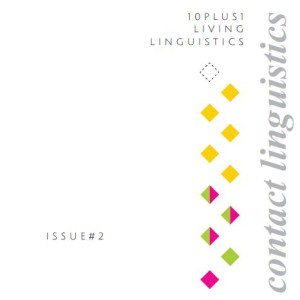ISSUE #3 | THE LINGUISTICS OF POLITICS
Guest-editor: Sascha Michel (Basel)
Opener: PD. Dr. Kersten S. Roth (Düsseldorf/Zürich)
Download CALL FOR CONTRIBUTIONS | Issue #03
The Linguistics of Politics is the topic of 10plus1’s third issue. This vast field of applied linguistics traditionally encompasses the language of politicians, political parties, institutions and movements from a lexical, pragmatic, and text linguistic point of view (cf. Schröter & Carius 2012; Niehr 2014; Girnth 2015). In recent years, the focus has been extended to aspects of campaigns and campaigning (cf. Pappert 2011; Trent et al. 2011), political frame and framing (cf. Klein 2008; Wehling 2016), discourse linguistic questions (cf. Wengeler 2003; Spieß 2011; Roth 2015), and computer-mediated communication, particularly with respect to social media (cf. Diekmannshenke 2013) and an increasing orientation towards citizens and recipients (e.g. Social TV, cf. Klemm & Michel 2014a). The latter shows that methodologically there is a perceptible shift from a pure focus on analyses of products to a holistic capture of production (cf. Wodak 2015), product and reception processes of political language and communication (cf. Klemm & Michel 2014b).
Issue #3 welcomes contributions of all formats situated within the broad frame of the linguistics of politics. Papers may deal with specific aspects, or give an overview of a broader field of research. We also invite contributions focusing on theoretical and/or methodological issues.
EXPRESSION OF INTEREST
Your Expression of Interest (EOI) should include
- the contribution format you are planning to choose,
- an elaborate description of your ideas (800 to 1000 words, a draft graphic, etc.),
- a draft outline of your contribution.
Please note that the EOI will be forwarded to the (guest) editors of the respective issue who decide on the basis of the EOI whether or not a contribution will be accepted for publication.
Please include the following information on author and co-author(s):
- name(s)
- institutional affiliation(s)
- contact details
and mail your EOIs to sascha.michel@unibas.ch by 15th January 2017.
We are looking forward to your contributions.
References
Diekmannshenke, H. (2013): Chatten – Bloggen – Twittern. Möglichkeiten der Partizipation an Politik im Internet. In: Jörg Kilian/Thomas Niehr (eds.) (2013): Politik als sprachlich gebundenes Wissen. Politische Sprache im lebenslangen Lernen und politischen Handeln. Bremen: Hempen, 251-269. | Girnth, H. (2015): Sprache und Sprachverwendung in der Politik: Eine Einführung in die linguistische Analyse öffentlich-politischer Kommunikation. Berlin: de Gruyter. | Klein, J. (2008): Frames – ein Gegenstand für Semantik oder Pragmatik? In: Pohl, Inge (ed.): Semantik und Pragmatik – Schnittstellen. Frankfurt a. M.: Peter Lang, 163-175. | Klemm, M. & Michel, S. (2014a): Social TV und Politikaneignung. Wie Zuschauer die Inhalte politischer Diskussionssendungen via Twitter kommentieren. In: Zeitschrift für Angewandte Linguistik (ZfAL) 60, 1/2014, 3–35. | Klemm, M. & Michel, S. (2014b): Medienkulturlinguistik. Plädoyer für eine holistische Analyse von (multimodaler) Medienkommunikation. In: Benitt, Nora u.a. (eds.): Korpus – Kommunikation – Kultur: Ansätze und Konzepte einer kulturwissenschaftlichen Linguistik. Trier: Wissenschaftlicher Verlag (WVT), 183–215. | Niehr, T. (2014): Einführung in die Politolinguistik: Gegenstände und Methoden. Göttingen: Vandenhoeck & Ruprecht. | Pappert, S. (2011): Politische Sprache und Kommunikation im Wahlkampf. In: Mitteilungen des deutschen Germanistenverbandes, Jg. 58, Heft 3/2011, (= Themenheft: Sprache in der Politik. Aktuelle Ansätze und Entwicklungen der politolinguistischen Forschung, herausgegeben von Christine Domke / Jörg Kilian), 258-268. | Roth, K. S. (2015): Diskursrealisationen. Grundlegung und methodischer Umriss einer pragmatisch-interaktionalen Diskurssemantik. Berlin: Erich Schmidt. | Schröter, M. & Carius, B. (2012): Vom politischen Gebrauch der Sprache. Wort, Text, Diskurs. Eine Einführung. | Spieß, C. (2011): Diskurshandlungen: Theorie und Methode linguistischer Diskursanalyse am Beispiel der Bioethikdebatte. Berlin: de Gruyter. | Trent, Judith S./Friedenberg Robert V./Denton, Robert E. (2015): Political Campaign Communication: Principles and Practices. 8. Ausgabe. Lanham, Maryland: Rowman & Littlefield Publishers. | Wehling, E. (2016): Politisches Framing: Wie eine Nation sich ihr Denken einredet – und daraus Politik macht. Köln: Herbert von Halem. | Wengeler, M. (2003): Topos und Diskurs: Begründung einer argumentationsanalytischen Methode und ihre Anwendung auf den Migrationsdiskurs (1960-1985). Berlin: de Gruyter. | Wodak, R. (2015) Performing Europe: backstage versus frontstage politics in the European Parliament. In: Governing Europe’s spaces. Manchester: Manchester University Press, 27-55.

